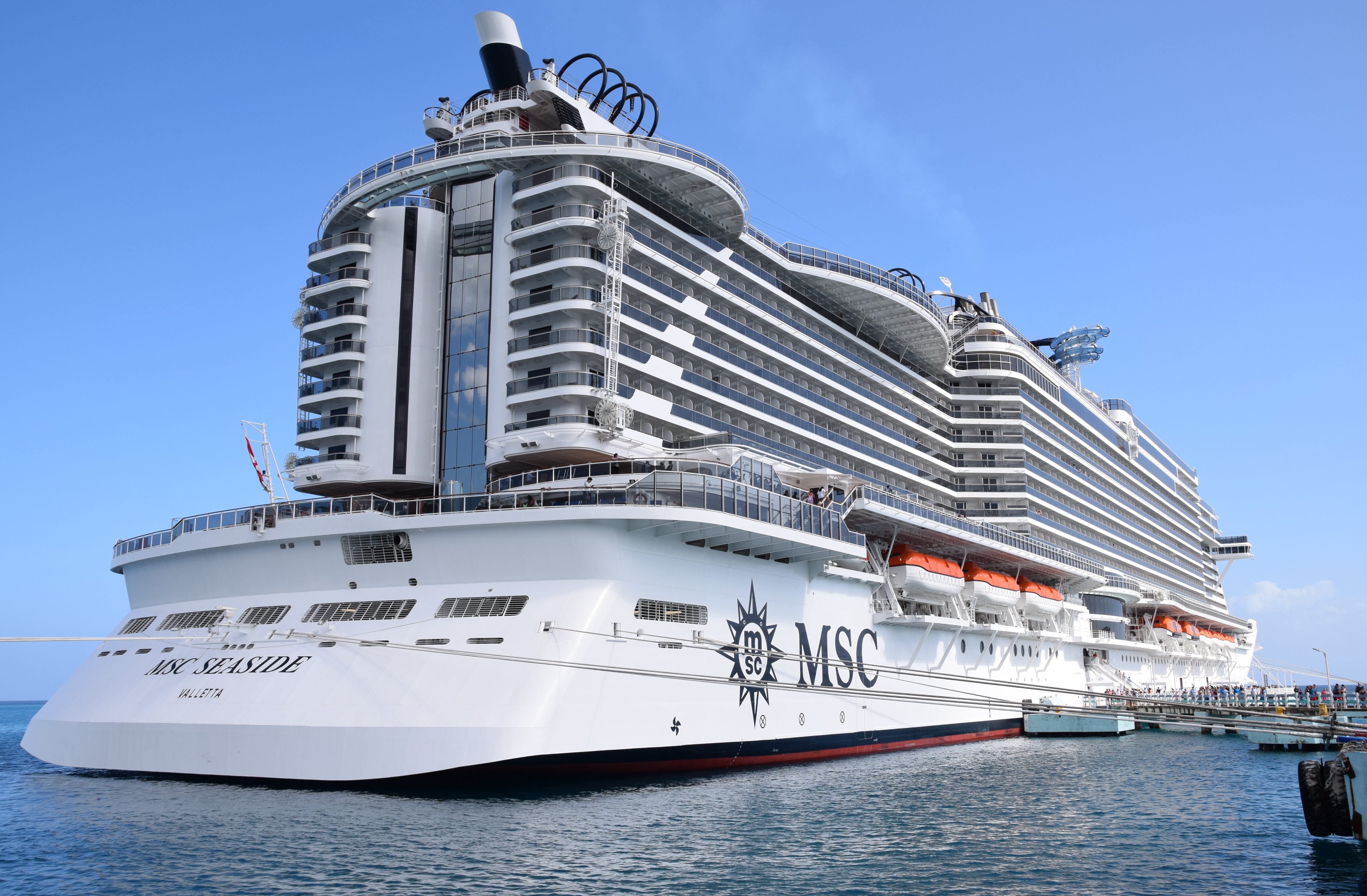Table Of Content
- Cruise ships dump 1 billion gallons of sewage into the ocean every year
- Cruise Ship Pollution: Background, Laws and Regulations, and Key Issues
- Food & Culture
- Cruise ship efforts to reduce pollution
- Have cruise ships always treated sewage water?
- Understanding Advanced Wastewater Treatment On Cruise Ships

But now, waste is sent to a treatment centre on the ship where the harmful materials are removed before the treated water is released. There isn’t a standard for where treated sewage water is released, as it depends on the waters where the ship is sailing. Different areas that have protection status can also have different rules – for example, there is a no-discharge zone covering the Strait of Juan de Fuca and Puget sound near Seattle in the US. Modern cruise ships can host as many as 7,600 passengers on a single sailing. Oceana is a non-profit international advocacy organization dedicated to protecting and restoring the world’s oceans through policy advocacy, science, law and public education. Founded in 2001, Oceana’s constituency includes members and activists from more than 150 countries and territories who are committed to saving the world’s marine environment.

Cruise ships dump 1 billion gallons of sewage into the ocean every year
They protect settlements from storms, natural disasters, and floods, and create concentrations of wildlife and fish that can support an entire industry. As climate chaos already threatens these communities with ocean acidification and sea-level rise, cruise ships continue to smash through coral and endanger the reefs upon which people depend. That’s according to Friends of the Earth, a non-governmental environmental group, which used US Environmental Protection Agency data to calculate arrive at that gross figure. The EPA estimates that single 3,000-person cruise ship pumps 150,000 gallons of sewage—about 10 backyard swimming pools’ worth—into the ocean per week. One vessel in an EPA study produced 74,000 gallons of sewage (pdf, p.2-1) in a single day. And while they might return to land with fond memories of umbrella drinks and shuffleboard, they leave a lot at sea.
Cruise Ship Pollution: Background, Laws and Regulations, and Key Issues
But now the industry is among the fastest-growing segments of leisure tourism, and the total number of passengers has doubled in a decade. To capitalize on this surge, cruise companies are making ships bigger; the largest now carry as many as 8,000. A general permit covers multiple facilities within a specific category for a specific period of time (not to exceed five years), after which it expires. Categories covered by general permits have common elements, such as similar types of operations that discharge the same types of wastes.
Food & Culture
Every single part of the ship, from the spas to the restaurants to the casinos, runs on massive diesel generators that belch carbon dioxide, sulfur oxides, nitrogen oxides, particulate matter, and other toxic pollutants into the air. Research has found that traveling on a cruise ship emits up to four times more CO2 as would traveling on a plane. And they emit far more sulfur and nitrogen oxides than other sources of travel and vacation, contributing to acid rain and higher rates of cancer. Coast Guard and other Federal agencies, solicited public input on the issue of cruise ship discharges during public hearings in Los Angeles, Juneau and Miami. In 2003, the number of cruise ship passengers in Southeast Alaska was about 800,000, with tens of thousands of crew, in addition. Roughly 95% of the current cruise ship traffic is concentrated in Southeast Alaska, a region with a population of approximately 73,000 people.
Cruise ship efforts to reduce pollution
The accumulation of the chemicals from human food is then released into the ocean and consumed by fish and other marine wildlife. Bioaccumulation (the accumulation of a contaminant in an organism from diet air, and water) can happen because the organism’s body cannot break down or expel the chemical. These chemicals then move up the food chain and can reach dangerous levels in both fish and other wildlife. Cruise ships operate within a healthy framework of environmental strategies – demonstrating their dedication to environmental responsibility. Oversight from the major leagues like the International Maritime Organization (IMO), the US Environmental Protection Agency (EPA), and the European Union (EU) brings compliance to both national and international environmental laws.
Have cruise ships always treated sewage water?
It’s not just about how food waste is disposed of, too, but also how it can be reduced in the first place. After all, wasted food is wasted money from a cruise line’s perspective, so anything they can do to reduce the amount of wastage being created not only helps the environment but also helps their bottom line. Burning anything is never ideal, since you’ll always be releasing some form of harmful gasses. But then neither is dumping anything into the ocean, as it’s not a natural diet for marine animals. A large cruise ship typically has 1.5 tonnes per day of food scraps to dispose of. The liquids that remain following the settlement chamber are passed into a disinfection chamber where UV radiation is used to remove the remaining pathogens and chemicals.
There are some concerns over grey water though, particularly that which comes from the laundry facilities on the ships, as it could contain a high volume of microplastics. It’s quite an intensive treatment process, which leaves water much safer to dump in the oceans. “This poll indicates that cruise customers’ initially favorable impressions of cruises do not prevent them from being outraged by the industry’s practices that pollute the ocean,” said Alan Quinlan, president of Greenberg Quinlan Rosner Research, Inc.
The critical thing to remember here is that no ship can dump whatever they want, wherever they want. Cruise ships need to follow rules based on where they sail and what sewage they’ve got. First of all, before we start talking about getting rid of waste — what happens to it on the ship? It has to be stored somewhere until it’s ready to be discharged, after all. Some cruise lines including Carnival and Royal Caribbean have started to work with artificial intelligence technologies to help manage menu options and food production, in a bid to reduce wastage.
How Cruise Ships Follow Environmental Standards
Cruise ships now use a complex sewage treatment process that helps limit the environmental impact of carrying so much waste at sea. Given how many passengers and crew members travel on a large-scale cruise ship, it is incredibly important that they handle human waste correctly. Human waste can refer to water that results from flushing toilets and water collected by cabin showers and other bathing facilities on the ship.
Oceana Works To Stop Cruise Ship Pollution - Oceana
Oceana Works To Stop Cruise Ship Pollution.
Posted: Sun, 14 Nov 2021 22:57:20 GMT [source]
Additionally, this added food waste can disrupt balance of the predator and prey chain. These include next-gen air quality systems and propulsion systems applying liquefied natural gas (LNG) as the main focus. Still, more innovative moves towards the change include shore power connections, optimized hull designs, speed management, and energy conservation measures. Bear in mind as well that this average includes the water that has been treated. As a guide, a four-minute shower uses around 8 gallons, while a toilet flush uses just under 2 gallons.
Bilge water also may contain solid wastes and pollutants containing high amounts of oxygen-demanding material, oil, and other chemicals, as well as soaps, detergents, and degreasers used to clean the engine room. These chemicals can be highly toxic, causing mortality to marine organisms if the chemicals are discharged. Amounts vary, depending on the size of the ship, but large vessels often have additional waste streams that contain sludge or waste oil and oily water mixtures that can inadvertently get into the bilge. However, before a bilge can be cleared out and the water discharged, the oil that has been accumulated needs to be extracted from the bilge water, after which the extracted oil can be reused, incinerated, and/or off-loaded in port. If a separator, which is normally used to extract the oil, is faulty or is deliberately bypassed, untreated oily bilge water could be discharged directly into the ocean, where it can damage marine life. According to EPA, bilge water is the most common source of oil pollution from cruise ships.17 A number of cruise lines have been charged with environmental violations related to this issue in recent years.
Annex IV requires that vessels be equipped with a certified sewage treatment system or holding tank, but it prescribes no specific performance standards. Within three miles of shore, Annex IV requires that sewage discharges be treated by a certified MSD prior to discharge. Between three and 12 miles from shore, sewage discharges must be treated by no less than maceration or chlorination; sewage discharges beyond 12 miles from shore are unrestricted. Vessels are permitted to meet alternative, less stringent requirements when they are in the jurisdiction of countries where less stringent requirements apply. In U.S. waters, cruise ships and other vessels must comply with the regulations implementing Section 312 of the Clean Water Act. The Coast Guard regulations cover three types of MSDs (33 CFR Part 159).
I have been cruising since 2004 and have sailed on dozens of cruises all over the world. As the creator of this website, I want to help families plan fun cruises free of stress and filled with adventure! They have to – people are becoming more conscious of the impact we’re having on the planet, and any industry which doesn’t try to improve will only be left behind in future.
Cruise ships generate a number of waste streams that can result in discharges to the marine environment, including sewage, graywater, hazardous wastes, oily bilge water, ballast water, and solid waste. These wastes, if not properly treated and disposed of, can be a significant source of pathogens, nutrients, and toxic substances with the potential to threaten human health and damage aquatic life. It is important, however, to keep these discharges in some perspective, because cruise ships represent a small—although highly visible—portion of the entire international shipping industry, and the waste streams described here are not unique to cruise ships.


No comments:
Post a Comment